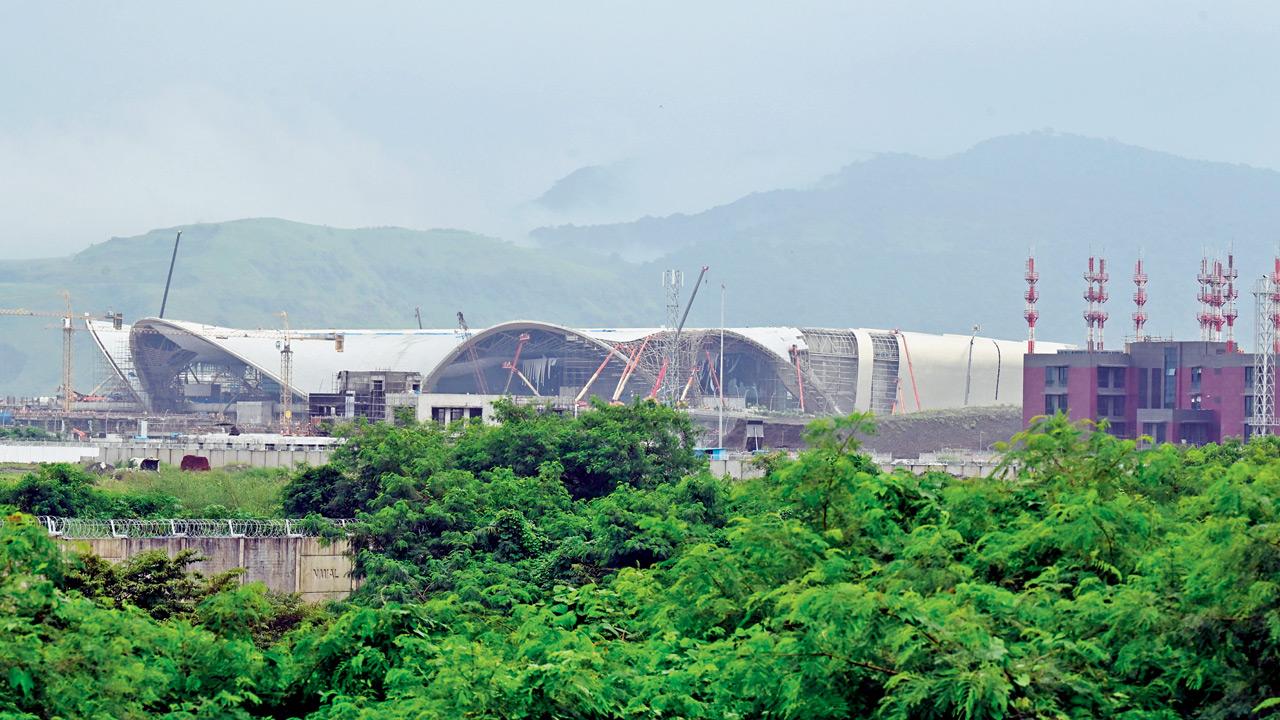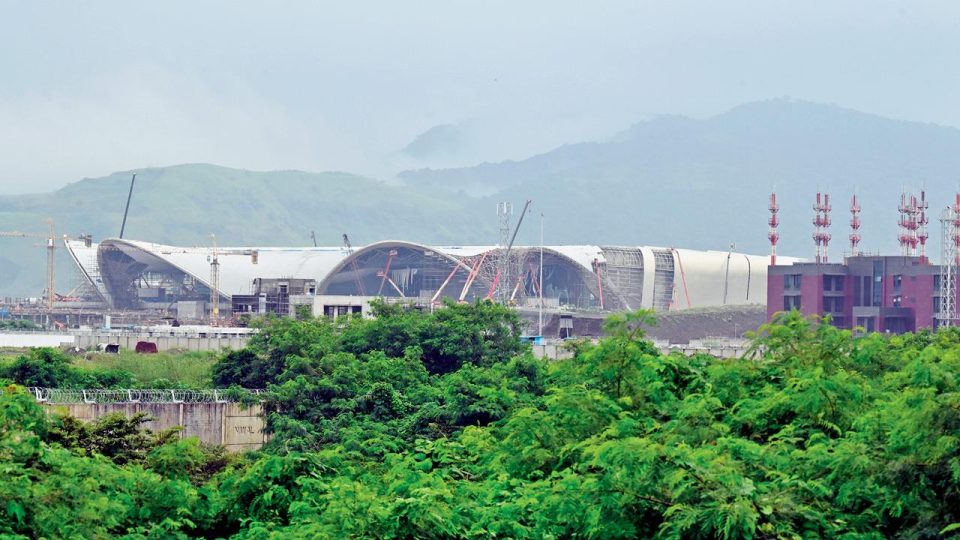
The upcoming Navi Mumbai International Airport (NMI) is set to redefine air travel with a terminal building inspired by the national flower, the lotus — an iconic design blending futuristic aesthetics with efficiency. The airport will be inaugurated soon. In a multi-part series, mid-day takes a wholistic view of the latest addition to citizens’s flying experience and checks out accessibility, convenience, options for hotels, restaurants and local conveyance.
Today, we bring you the features and a birds-eye view of the facility. Developed in multiple phases, the airport will eventually feature four passenger terminals capable of handling 90 million passengers annually. All terminals will be interconnected by Automated People Movers (APMs) — self-propelled electric shuttles similar to those at major global airports — allowing passengers to check in at any terminal and reach their gates seamlessly.
Billed as India’s greenest airport, NMI will rely entirely on electric vehicles for airside operations, generate 47 MW of solar power, and store Sustainable Aviation Fuel (SAF). It will also feature rainwater harvesting, extensive water recycling, landscaped water bodies, and skylit terminals designed to maximise natural light.
The cargo infrastructure is planned to scale up from 0.5 million metric tonnes (MMT) in Phase 1 to 2.6 MMT by Phase 5. Meanwhile, India’s largest General Aviation terminal will host high-end dining, including a Michelin-star restaurant. Navi Mumbai International Airport Pvt. Ltd. (NMIAL) has also tied up with Mahanagar Gas Ltd. (MGL) to supply around 2300 kg of piped natural gas daily across multiple facilities.
The International Air Transport Association (IATA) has allotted the code ‘NMI’ to the airport, which is already attracting interest from global logistics and e-commerce giants operating some of the world’s largest aircraft.
Navi Mumbai International Airport features
Lotus-inspired design: Iconic terminal symbolising India’s national flower
Passenger capacity: 90 million flyers annually across 4 terminals
Seamless transfers: Automated People Movers (APMs) linking all terminals
Green hub: 47 MW solar power, rainwater harvesting, recycled water use
Sustainable fuel: Dedicated storage for Sustainable Aviation Fuel
Electric fleet: 100% EVs for airside operations
Cargo growth: From 0.5 MMT in Phase 1 to 2.6 MMT by Phase 5
General Aviation terminal: India’s largest, with Michelin-star dining
Natural light: Skylit terminals to reduce energy use
PNG supply: Daily 2300 kg piped natural gas for operations


